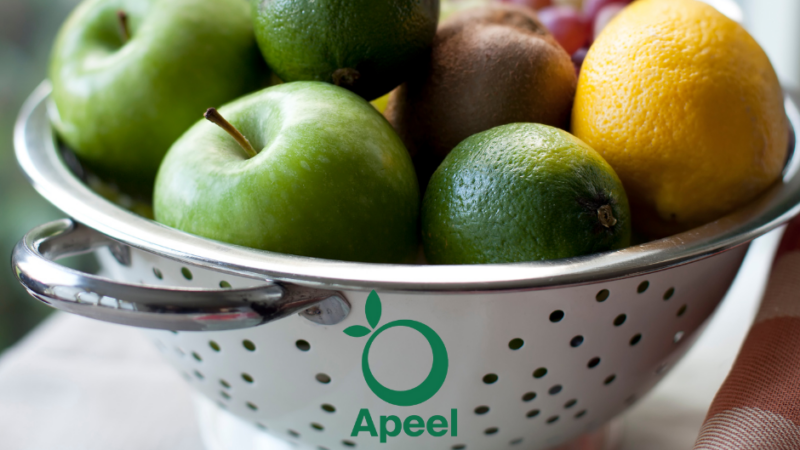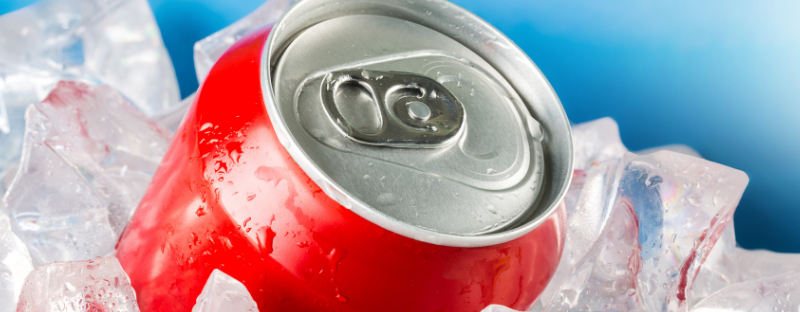Hidden Sources of Gluten
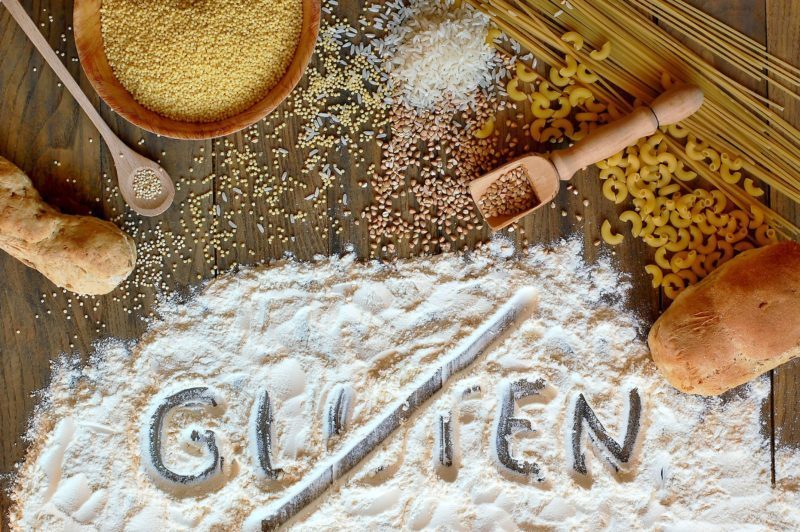
Dr McQueen of Red Mountain Natural Medicine in Boise shares with HFI some common hidden sources of gluten in food, personal products and household products. If you or one of your loved ones have been diagnosed with Celiac disease or non-Celiac gluten sensitivity (NCGS), hopefully you are already well-aware of the common gluten-containing foods to be avoided in your diet. Complete avoidance of gluten, a protein found in many cereal grains, is an absolute necessity in those with Celiac disease since ingestion of gluten in these individuals is associated with autoimmune-mediated damage to the small intestine. Untreated, Celiac disease can lead to nutritional deficiencies and increase the risk of all kinds of serious health problems, some of which include other autoimmune disorders like Type I diabetes and multiple sclerosis, anemia, osteoporosis, infertility, miscarriage, neurological conditions, and even cancers of the digestive tract. 1,2

Celiac disease is one of the most common chronic inflammatory conditions affecting the West as well as other parts of the world. In Western countries, prevalence of Celiac disease is considered to be somewhere close to one percent. 3,4
Prevalence of NCGS is still widely debated, but estimates in Western populations are significant, varying somewhere between 0.6 to 6%. 5 NCGS has been described as a non-allergic and non-autoimmune condition in which the consumption of gluten can lead to symptoms similar to those seen in Celiac disease. 6 In cases of NCGS, gluten exposure in the diet can lead to the development of symptoms in or outside of the gastrointestinal tract from hours to days. These symptoms then improve or disappear after the withdrawal of gluten from the diet. NCGS differs from Celiac disease in that it is not considered an autoimmune condition and does not typically cause significant damage to the intestines. That being said, some individuals that are non-Celiac are highly sensitive to even the tiniest amounts of gluten exposure.
With growing awareness of the gluten problem that impacts so many individuals, it has become progressively easier to find gluten-free options when grocery shopping or going out to dine. What remains a challenge is avoiding contact with the laundry list of hidden gluten-containing ingredients in packaged and processed foods, personal care products, and even medications.
GLUTEN-CONTAINING FOODS TO AVOID
In the case of Celiac disease or NCGS (especially the former!) care must be taken to avoid the following gluten-containing foods:
Barley, Brewer’s Yeast, Bulgur, Couscous, Einkorn, Kamut, Oats (also available gluten-free, but this MUST be from pure, uncontaminated oats), Rye, Semolina, Spelt, Triticale, Wheat, and Wheat Germ/Flour/Bran/Starch
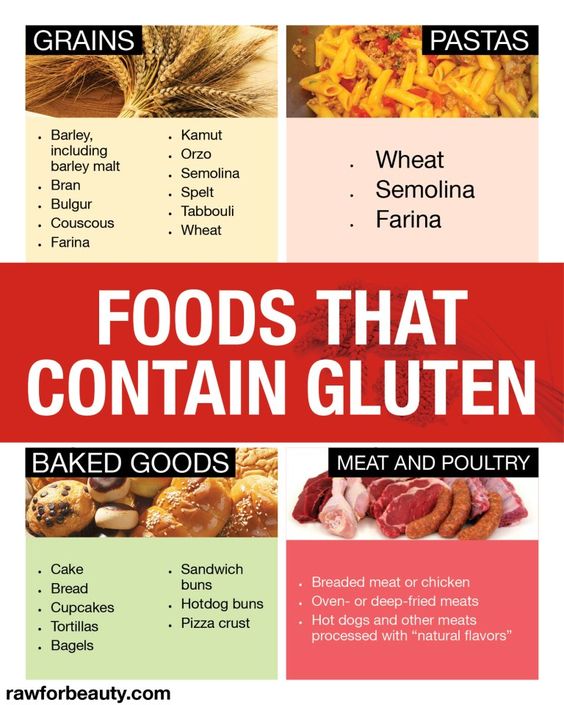
HIDDEN SOURCES OF GLUTEN IN COMMON FOOD ITEMS
Even if you are well-versed in identifying and staying away from the specific grains that contain gluten, it’s important to know about the food items that may commonly contain hidden gluten-containing ingredients. In order to avoid gluten exposure, you need to become comfortable reading food labels. This may seem daunting, but it’s really something we should all be doing anyway to support our health! Here are some of the common food items that contain gluten:
- Malt vinegar (or any product containing malt, since this is derived from barley)
- Salad dressings, marinades
- Seasonings
- Condiments (mustard, ketchup, mayonnaise, etc.)
- Soy and teriyaki sauces (most contain wheat)
- Sushi rice (often contains malt vinegar)
- Broths/stocks/bouillon cubes
- Miso soups that are barley-based
- Prepared/canned soups and beans
- Processed meats (deli meats, sausages, hot dogs, etc.)
- Fish sticks
- Coffee creamers, flavorings, or instant coffee
- Some alcohols (beers, wine coolers, some vodkas – here is a link for more information on gluten-free alcoholic beverages)
- Chewing gum
- Candies and candy bars
- Energy bars, granola bars
- Gravies, sauces of all kinds
- Meat substitutes (veggie burgers, veggie sausage, seitan)
- Breads, pastries, baked goods, croutons
- Pastas, noodles
- Crackers, chips, French fries
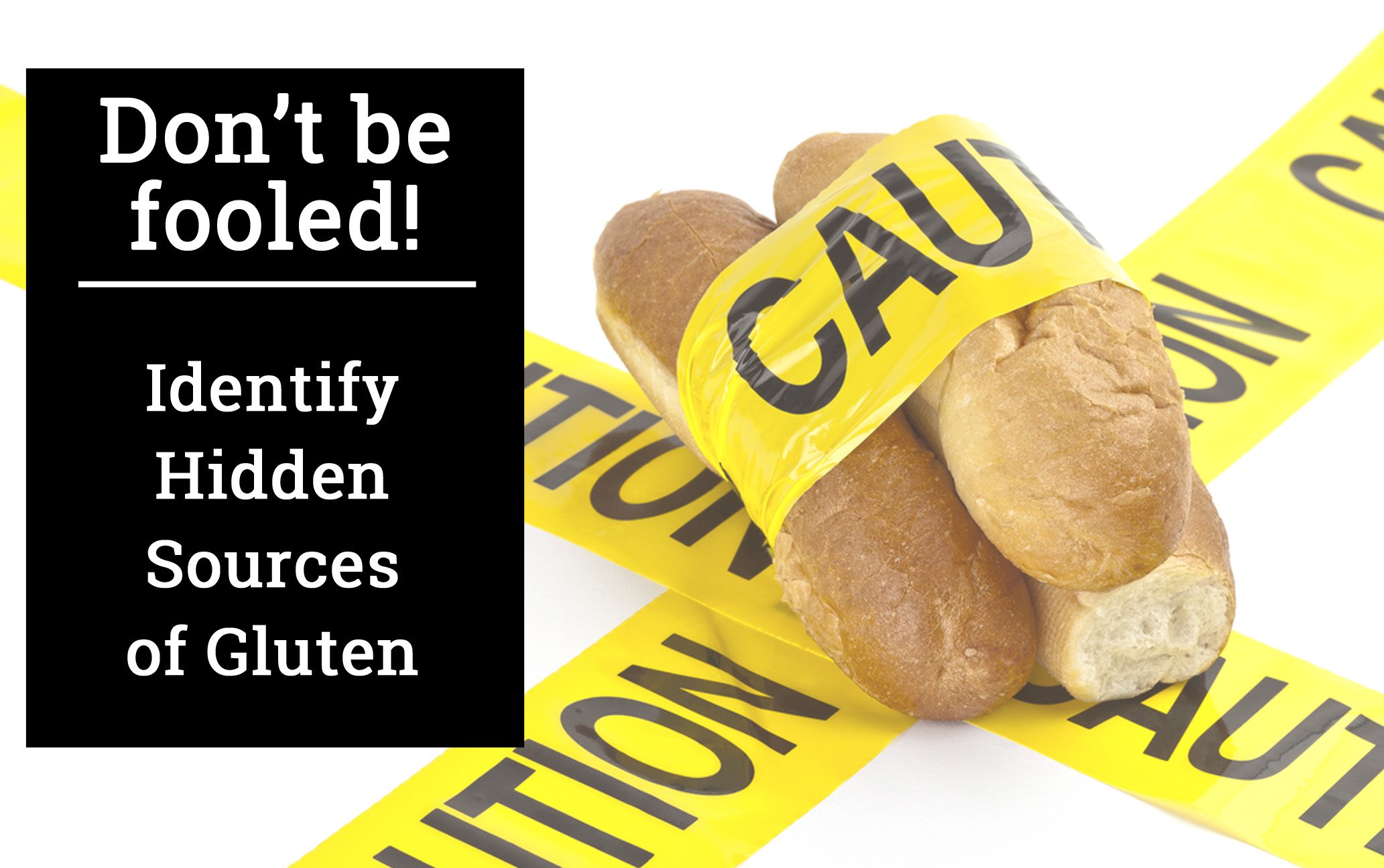
INGREDIENTS THAT MAY INDICATE HIDDEN SOURCES OF GLUTEN
After you have read over the list above, you might be feeling a little overwhelmed. And justifiably so. What in the heck is being added to all these food items above that can make them gluten-containing? To be honest, a whole lot of different ingredients can contain hidden gluten! Here is a link to a site that lists some of these hidden ingredients.
Fortunately, more and more gluten-free food items are becoming available all the time to meet the growing demands for these products. This certainly provides some benefits and conveniences for those following a gluten-free diet, but unfortunately it also has a major downside. Many of the gluten-free food substitutes out there are touted as being healthy options or perceived this way by the public. But in reality, many gluten-free products are absolute junk since they are still highly processed and contain way too many non-pronounceable ingredients. Many of these products are highly refined and contain added sugars, starches, or other additives to help mimic the highly desirable texture of gluten.
You should also be aware that current FDA standards allow products that are labeled as “gluten free” to contain up to 20 ppm (parts per million) of gluten. For these reasons packaged foods and food items should, as a general rule, always be minimized in the diet, even if they are labeled gluten-free. I can say from personal experience and in working with my patients that this makes it so much simpler to stay gluten-free!
Emphasize a diet rich in whole unprocessed foods that require no or little processing.
This can include the following:
- Healthy Fats – Extra virgin olive oil, coconut and MCT oil, organic/pastured butter and/or ghee, raw nuts/seeds/nut and seed butters, avocado, olives
- Healthy Proteins – Whole eggs, low mercury fish (especially wild salmon, sardines), grass-fed meats/poultry, wild game
- Vegetables – Leafy greens and lettuces, broccoli, kale, cabbage, cauliflower, onions, garlic, mushrooms, Brussels sprouts, squashes/zucchini, green beans, bok choy, lots more!
- Fruits – Eat a variety, but emphasize those higher in fiber and lower in sugar (apples, pears, dark berries, avocados, tomatoes, lemons, limes)
- Herbs, Seasonings, Condiments – Enjoy whatever you like, but just make sure any pre-prepared products are free of gluten, sugar, and preservatives.
- Legumes, Beans, and Lentils
- Gluten-Free Grains – Amaranth, buckwheat, brown rice, white rice, wild rice, millet, quinoa, and teff.

HIDDEN SOURCES OF GLUTEN IN YOUR COSMETICS AND OTHER NON-FOOD ITEMS
While there is plenty of debate over how strict one must be in avoiding gluten from non-food (non-ingested) sources, it makes sense that individual sensitivity should guide this decision. Some individuals find that they do much better avoiding gluten containing products altogether; others have no need to be so strict. Here is a list of non-food items that commonly contain gluten:
Personal Care Products:
Examples include shampoo, conditioner, hairspray, hair dye and other hair products, lip balm, lipstick, lotion/cream, makeup, mouthwash, soap, moisturizer, deodorant, sunscreen, toothpaste.*NOTE: Keep in mind that lip balms and lipsticks are more likely to be ingested to some degree, especially if used regularly. Extra caution should be taken with these products. Here is a link for resources on gluten-free skin care products and cosmetics. Another link here.
Household Items:
Examples include laundry detergent, glues on stamps/envelopes
Products in Dentistry:
Examples include sealants and various plastics
Medications:
Many medications are not gluten-free because they contain added fillers or excipients derived from wheat or gluten, or they are manufactured in facilities not dedicated gluten free. It can be a challenge to determine whether they are or not. When in doubt, call the manufacturer. Also, keep in mind that manufacturers change ingredients all the time, so you must periodically check for any changes in ingredients. Here is some further information to read on gluten in medications.
Vitamins/Supplements:
Many of the lower quality vitamins and supplements available on the market will contain common allergens, fillers, and binders including wheat and/or gluten. It’s absolutely worth paying a bit more for brands that care about making cleaner, higher quality products that are free of common allergens. There are a number of great professional brand companies out there to choose from. Look for companies that are GMP-certified to assure purity and quality. Some of the brands that I trust are Metagenics, Thorne Research, Seeking Health, Pure Encapsulations, and Allergy Research Group. Keep in mind that not every product from these stated companies will be gluten free – Make sure to check for yourself and/or healthcare practitioner before using a specific product.
Playdough:
Since kids playing with playdough are known for ingesting some at least every now and then, you should know that it contains gluten. There are resources online for making your own gluten-free playdoughs if you prefer!
Food Containers and Food Preparation Equipment:
Whether you are eating at home or at a restaurant, it’s important to know that exposure to gluten can occur via strainers, cutting boards, cookware, grills, and toasters that have previously come into contact with breads or other gluten-containing foods.
Pet Food:
Many pet foods contain wheat or oats. The dust particles from these can get inhaled or transferred to the mouth, creating a problem for some sensitive individuals.
THE BOTTOM LINE
Gluten is found is all kinds of foods and non-food products that we unintentionally come into contact with every day. Avoiding gluten exposure takes some real diligence and effort, but it can be done! If you are on the gluten-free path, know that you are not alone and there are lots of great people, support groups, and resources out there to help you be successful. Hopefully this article is a stepping stone for helping you with that success.
In Health,
Dr. Shana McQueen of Red Mountain Natural Medicine
this article originally appeared at: http://redmountainclinic.com/meet-dr-mcqueen/
REFERENCES:
- Serena G, Camhi S, Sturgeon C, Yan S, Fasano A. The Role of Gluten in Celiac Disease and Type 1 Diabetes. Nutrients. 2015;7(9):7143-7162. doi:10.3390/nu7095329.
- Rodrigo L, Hernández-Lahoz C, Fuentes D, Alvarez N, López-Vázquez A, González S. Prevalence of celiac disease in multiple sclerosis. BMC Neurology. 2011;11:31. doi:10.1186/1471-2377-11-31.
- Ciccocioppo R, Di Sabatino A, Corazza GR. The immune recognition of gluten in coeliac disease. Clinical and Experimental Immunology. 2005;140(3):408-416. doi:10.1111/j.1365-2249.2005.02783.x.
- Gujral N, Freeman HJ, Thomson AB. Celiac disease: Prevalence, diagnosis, pathogenesis and treatment. World Journal of Gastroenterology : WJG. 2012;18(42):6036-6059. doi:10.3748/wjg.v18.i42.6036.
- Igbinedion SO, Ansari J, Vasikaran A, et al. Non-celiac gluten sensitivity: All wheat attack is not celiac. World Journal of Gastroenterology. 2017;23(40):7201-7210. doi:10.3748/wjg.v23.i40.7201.
- Capili, B, Chang, M, et al. A Clinical Update: Nonceliac Gluten Sensitivity—Is It Really the Gluten? The Journal for Nurse Practitioners. 2014;10(9):666-673. doi.org/10.1016/j.nurpra.2014.07.036

